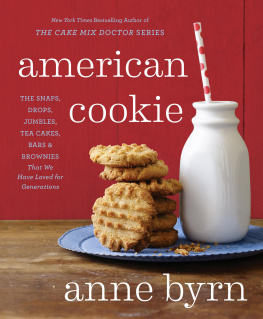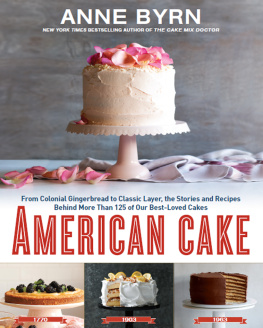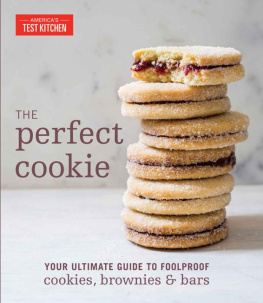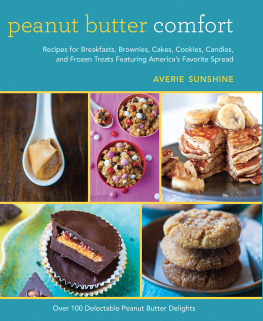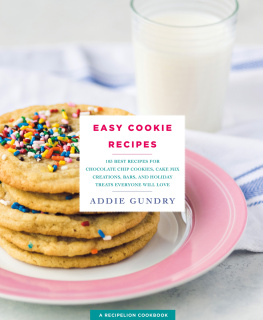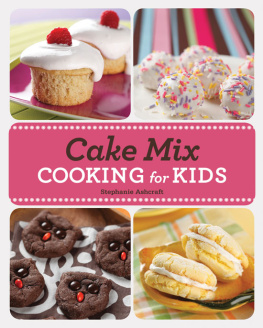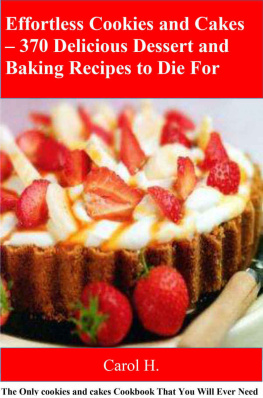Contents
Acknowledgments
In life, the small things are often so much sweeter and more interesting than the big stuff. In the world of food, thats truethink caviar, a truffle shaving, Maine blueberries. And think the small, sweet bites in our recipe boxesthe pralines, calas, jumbles, brownies, and snickerdoodles that we pop into our mouths without thinking twice. They may be small but speak volumes.
When I set out 4 years ago to write the history of American cake, I wanted to know the true stories behind our great cakes. But once I was deep in pound cake batter and had interviewed a dozen food historians, I realized the book was more than a collection of favorite recipes. It was a way to revisit American history and use cake as the lens. Each cake of our past tells a story and gives us clues as to what was happening when it was first baked. If you let them, the ingredients and methods take you back in time.
Along the way, I uncovered stories and recipes for little cakes and cookies that had something to say, too. They werent the grand Lady Baltimore, red velvet, or coconut layer cakes, but they were recipes we love every dayKatharine Hepburn Brownies, Hello Dollies, peanut brittle, tea cakes, beignets, and more. And I wondered if examining these small bites might tell me about their history, just as the big cakes did.
So I took on this project. I baked peanut butter cookies and found out who first baked them. (Kudos to the lunchroom ladies!) And I baked my own Girl Scout cookies just like the Scouts did nearly 100 years ago when they were in charge of not only selling cookies but baking them, too. I discovered recipes that I had not heard ofmarguerites, apisas, rocks, ground nut cakes, Jackson Jumbles, and Dolley Madison Seed Cakes. And I uncovered beautifully regional recipes I had not been raised on in the Southhermits, fig bars, bizcochitos, Joe Froggers, Nanaimo Bars, and peppernuts.
Just as in my last book project, I am thankful for the people who took the time to explain a regional difference, discuss an ingredient, detail a method, and explore a period of time or a people that were important to the recipe stories in my book. I would like to especially thank:
Peter G. Rose, for her knowledge of the Dutch in America
William Woys Weaver, for his writings about the Pennsylvania Dutch
Connie Carter of the Library of Congress, for sharing family recipes and her in-depth knowledge of old books and cookbook authors
Beatrice Ojakangas, for her calm explanation of Scandinavian baking
Joan Nathan, for explaining Jewish foodways
Damon Lee Fowler, for interpreting old Southern cookbooks and for his research on the recipes of President Thomas Jefferson
Nathalie Dupree, for connecting the dots to people and recipes of the past
Betty Fussell, for explaining gingersnaps and their unique history
In New Orleans: Liz Williams, Rien Fertel, Poppy Tooker, and Judy Walker, who know their city and its food so well
Charles A. Tingley, the senior research librarian at St. Augustine Historical Society, who brought that area of Florida to life for me
Jennifer Lewis, who suggested midwestern candies to make
Patty Erd, for giving background on spices in early American baking
Sharon Joyce, for talking about the foods of Maine
David Shields, who explained the connection of Southern baking and the land
Nic Butler, a wise interpreter of Charlestons food history
Alyssa Stribling, for researching the fascinating history of petits fours
Martha Bowden, for her dedication to testing old recipes
Greater Midways Food Alliance, for sharing the stories of the Midwest
Karen Haram, for telling me about the Mexican wedding cookie
Jennie Hytken, for sharing a family matzo cookie
Joanne Lamb Hayes, for all things wartime baking
John Martin Taylor, for his knowledge of coastal Southern food and frying
Stephanie Golding, for telling me about her Grandma Hartman and the molasses cookie
Sara Franco, a college friend, who has mastered thumbprint cookies in Atlanta
Shellie Unger, a longtime Philadelphia friend and talented baker
Alice Randall, for friendship and explaining the Neiman Marcus cookie as only she can
Emily Frith, for baking chocolate mocha cookies for me
Valerie Frey, for talking tea cakes and persimmon cookies
Julia Blakely, a Smithsonian researcher, who unlocked the Joe Frogger mystery
Again, Id like to thank my family for giving me up, once again, to this project. If you couldnt tell from my blank stare, the stack of dirty dishes in the sink, and the books and papers strewn on top of the dining room table, Mom was deep in a book project again. I was back in the 1880s or the 1930s or the 1770s, depending on the day. So thank you, John, Litton, John, Kathleen, Hugh, and Ella for understanding.
And thanks to my agent, David Black, and his fine team, especially Jennifer Herrera and Matt Belford, for guiding me through this process so I could focus on reading and baking. Thanks again to my super editor, Dervla Kelly, who was patient with me turning in this manuscript the same year my daughter married and two other children went off to college and med school. It was a crazy, busy year, so thanks to Dervla and all of Rodale for understanding. Thanks to Marilyn Hauptly, Sara Cox, and Anna Cooperberg of the editorial department for checking everything I wrote. And thanks, always to the creative genius Amy King, who must eat, sleep, and dream her projects because everything she does is fresh and brilliant. Bringing these recipes to life in photos was possible thanks to the accomplished team of photographer Tina Rupp, food stylist Paul Grimes, and prop stylist Stephanie Hanes. You have never seen so many cookies in one place in your life!
Finally, I am grateful to the librarians and libraries who opened their collections to me as they did with American Cake . And thanks to these online sources who are out there for you to use, as well. People ask me how I wrote American Cake and now American Cookie where did I access these old recipes? Through the years, I have weakened and purchased some old rare books because Ive read about them and wanted to own a copy. But you can spend a lot of money doing that. Its more cost effective to look at these old books through trusted online sources. The Library of Congress (loc.gov) is a first great place to start if you are looking for an old cookbook. And here are my other suggestions for old books and newspaper stories: Gutenberg.org, Archive.org, Newspapers.com, and Accessible.com. The latter two are subscription services. I also took advantage of the online research resources of Brittanica.com, NPR.org, NPS.org, NYTimes.org, Foodtimeline.org, Theoldfoodie.com, and Wikipedia. Thanks to all!
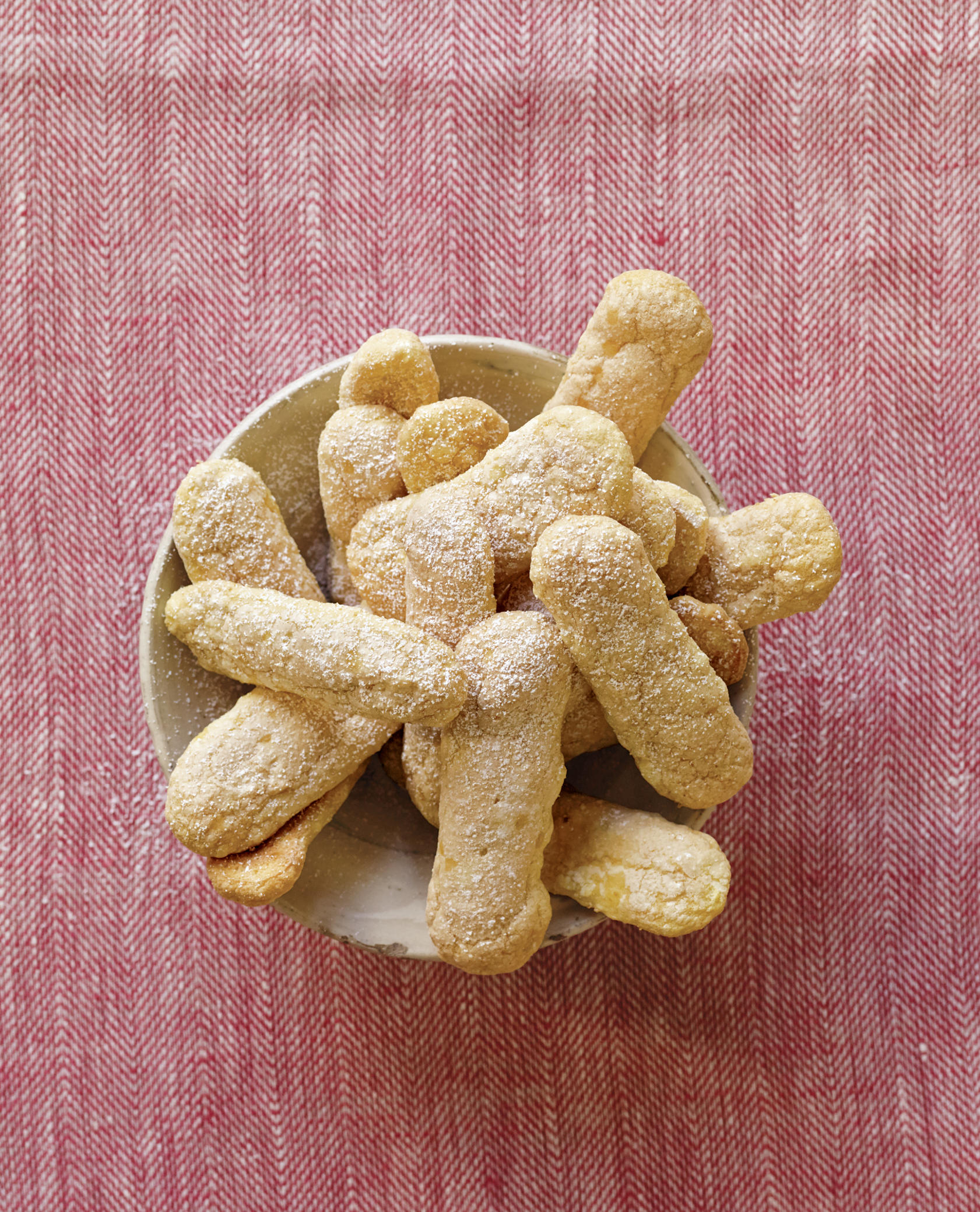
Bibliography
Americas Cook Book: Compiled by the Home Institute of the New York Herald . New York: Charles Scribners, 1938. Print.
Anderson, Jean. The American Century Cookbook. New York: Clarkson Potter, 1997. Print
Andrews, Glenn. Food from the Heartland: The Cooking of Americas Midwest. New York: Prentice Hall, 1991. Print.
Baird, Sarah C. Kentucky Sweets: Bourbon Balls, Spoonbread, and Mile High Pie. Charleston, SC: History, 2014. Print.
Bienvenu, Marcelle, and Judy Walker, eds. Cooking Up a Storm. San Francisco: Chronicle Books, 2008. Print.
Boatner, Mark. Landmarks of the American Revolution. New York: Hawthorn Books, 1975. Print.
Booth, Letha. The Williamsburg Cookbook: Traditional and Contemporary Recipes. Williamsburg, VA: Colonial Williamsburg Foundation, 1975. Print.
Bryan, Lettice. The Kentucky Housewife. (Cincinnati: Shepard & Stearns, 1839); Columbia, SC: University of South Carolina Press, 1991. Print.

